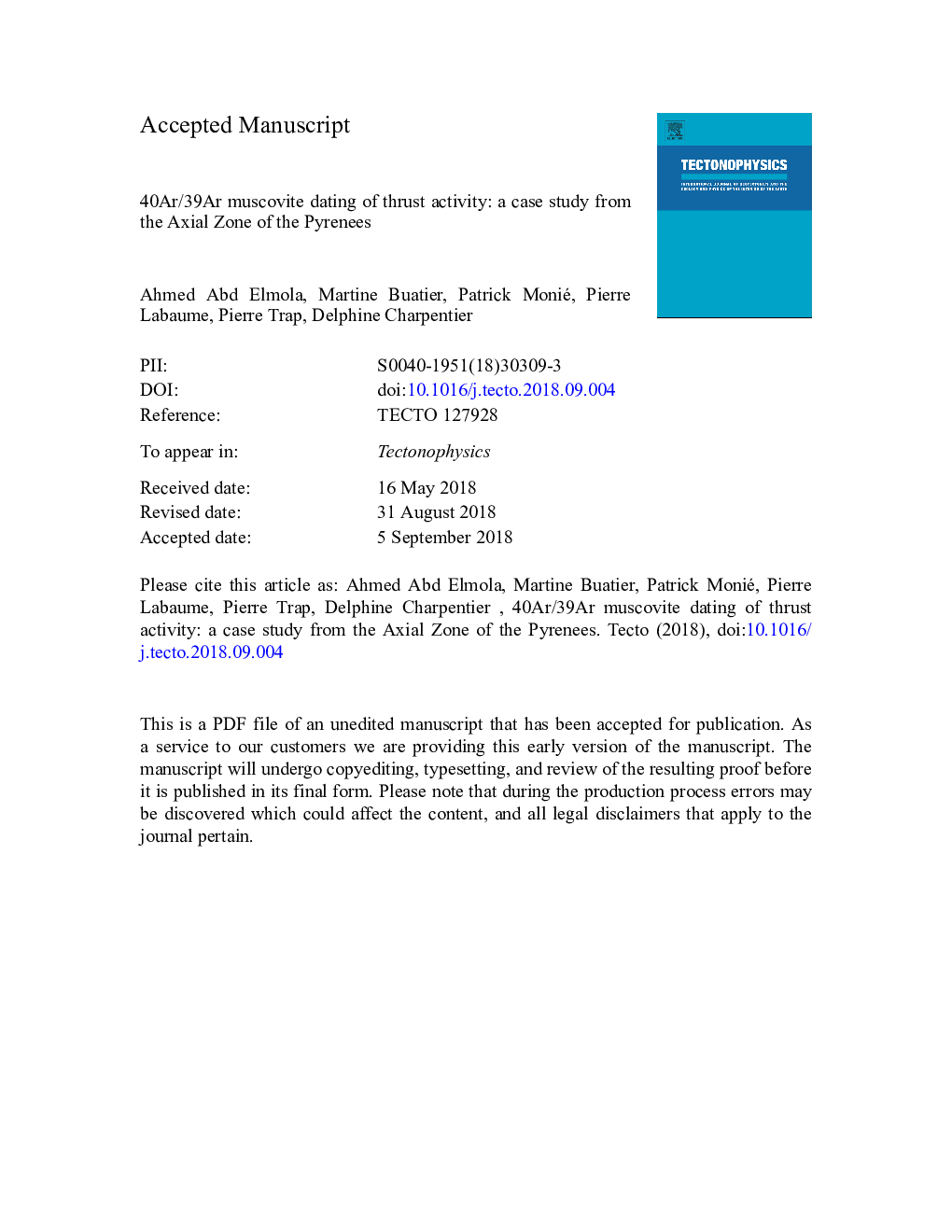| Article ID | Journal | Published Year | Pages | File Type |
|---|---|---|---|---|
| 9528387 | Tectonophysics | 2018 | 63 Pages |
Abstract
Petrographic observations confirm that pressure solution and recrystallization/dissolution processes in presence of fluids are the main mechanisms that controlled the chemical/textural changes in the fault core zone. Three groups of muscovite are identified in the fault zone i.e. detrital, diagenetic and newly-formed muscovites. The detrital and diagenetic muscovites are mainly present in the damage zone, while the newly-formed muscovite is abundant in the core zone and is synkinematic to the fault activity. The fractions 50-16â¯Î¼m, 16-2â¯Î¼m, 2-0.5â¯Î¼m, <0.5â¯Î¼m and the bulk of two samples from the core and damage zones were encapsulated and dated using the 40Ar/39Ar technique. All size-fractions of the core zone sample have younger ages compared to ones from the damage zone and the ages decrease with grain-size reduction. This indicates the strong effect of deformation in the core zone that enhanced the recrystallization of younger muscovite. The finest fraction (<0.5â¯Î¼m) of the core zone sample has a plateau-like spectrum with a total gas age of 36.9â¯Â±â¯0.2â¯Ma. This age is interpreted as the oldest age possible for the activity of the PPVT during the late Eocene (Priabonian) that coincides with the activity of the GT.
Related Topics
Physical Sciences and Engineering
Earth and Planetary Sciences
Earth-Surface Processes
Authors
Ahmed Abd Elmola, Martine Buatier, Patrick Monié, Pierre Labaume, Pierre Trap, Delphine Charpentier,
